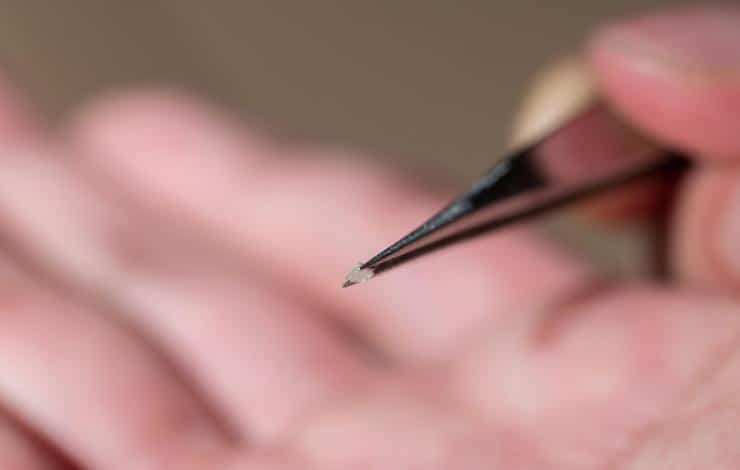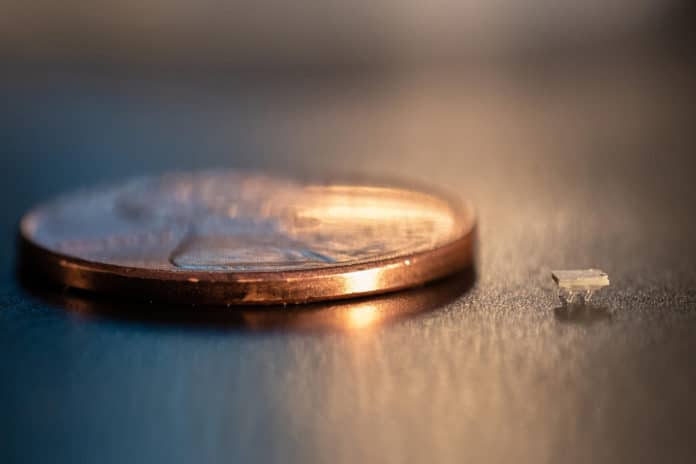Creating a 2 mm long walking robot sounds a bit difficult as it will not be able to carry much of a battery. And hence Georgia Tech has developed a tiny 3D printed robot that moves by harnessing vibration. The robot called “micro-bristle-bot” might work in groups to sense environmental changes, move materials, and or perhaps one day repair injuries inside the human body.
This smallest vibration-powered robots – about the size of the world’s smallest ant – respond to different vibration frequencies generated from piezoelectric actuators, ultrasound sources or even tiny speakers. It actually depends on their configuration, which allows researchers to control individual bots by adjusting the vibration.
Despite their small size, the bots can cover four times their own length in a second.
The micro-bristle-bots are 3D printed out of polymer resin, via a process known as two-photon polymerization lithography. Some of the robots have four springy legs, while others have six, which are really more like bristles.

Each bot consists of a piezoelectric actuator – which uses the material lead zirconate titanate (PZT) – glued onto a polymer body. These small actuators generate vibration and are powered externally because no batteries are small enough to fit onto the bot. Vibrations can come via either a shake table, an external ultrasound/sonar source, or a tiny acoustic speaker.
Those vibrations move the springy legs up and down, propelling the micro-bot forward. By tweaking their legs’ size, diameter, and overall geometry, the bots can be designed to respond to different vibrational frequencies. The amplitude of the vibration controls the speed that the robots move. That’s why, by linking together two differently-designed robots that respond to different frequencies, it might be possible to steer both by varying the frequencies and amplitudes.
“Once you have a fully steerable micro-robot, you can imagine doing a lot of interesting things,” said Azadeh Ansari, an assistant professor in the School of Electrical and Computer Engineering at the Georgia Institute of Technology.
Besides, the onboard actuators vibrate when an electric voltage is applied to them. In reverse, they can also be used to generate a voltage, when they are vibrated. The robot’s capability could use to power up onboard sensors when they are actuated by external vibrations.
The vibration-powered robots are approximately two millimeters in length, 1.8 millimeters wide and 0.8 millimeters thick, and weigh about five milligrams. Researchers are now scaling up the manufacturing process so that thousands could be made at once. Some of the possible applications the team included are the movement of materials within tiny spaces or even the treatment of injuries within the body.
Moreover, as the actuators can be tuned to generate an electric current when exposed to vibrations, the robots could also carry environmental sensors that are temporarily powered up as needed. The paper on the research is published in the Journal of Micromechanics and Microengineering.
